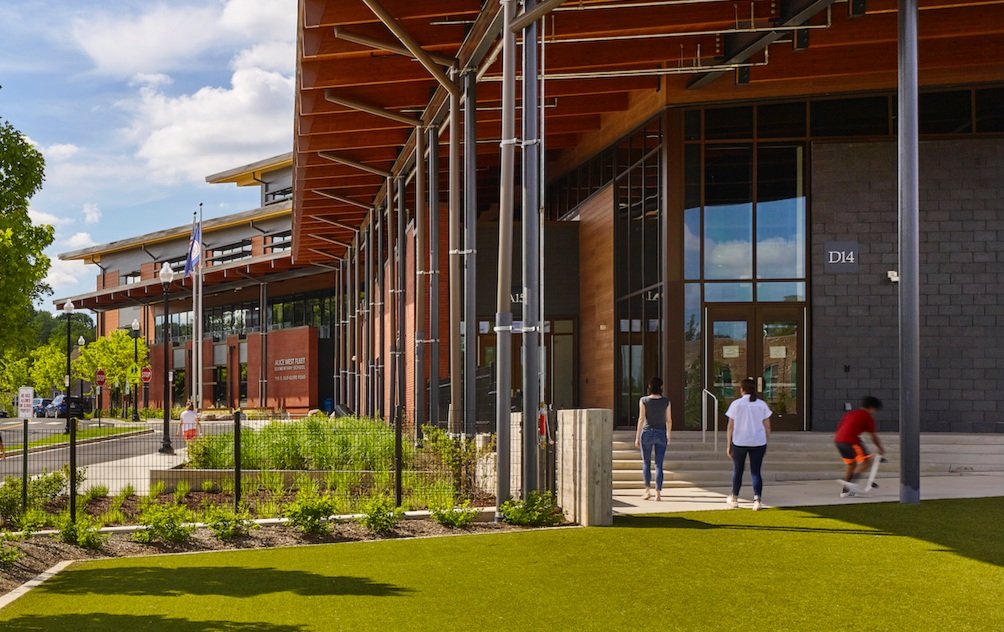
Who benefits from Elective Pay?
Tax-exempt entities, such as public schools, non-profits, and Tribal, local, and state governments can now access the various tax benefits included in the Inflation Reduction Act.
Since tax benefits (credits and deductions, both) are uncapped and unlimited dollars, any school that completes a qualifying clean energy project is eligible to receive funds.
For tax credits, schools will receive a tax-free cash payment from the IRS for the tax year the project is placed in service. Further guidance on eligibility can be found on the IRS’s Frequently Asked Questions: Elective Pay.
For tax deductions, schools will work with their designer to receive funds. For more information on tax deductions, see the IRS’s update on Energy Efficient Commercial Buildings Deduction.
In addition to bringing benefits to schools and students, the IRA is intended to make the clean energy economy work for all, by creating jobs, reducing costs, and advancing economic growth in communities that have been left behind.
With those goals in mind, an additional credit of 10 percentage points or 20 percentage points is available for qualified solar and wind energy facilities in one of four categories in the areas mapped here:
Located in a low-income community (10%)
Located on Tribal land (10%)
Installed on certain federal housing projects (20%) or
Serving low-income households (20%)
Note: Prior to claiming this credit, an entity must pre-apply, receive a capacity allocation, and place your facility (project) in service to receive the bonus. Applicants have up to 4 years after the allocation for the project to be placed into service. Filing for this low-income bonus credit is a separate process from the pre-filing registration process for the tax credits (i.e. Sec. 48, Sec. 45W, Sec. 30C).
The Low-Income Communities Bonus Credit Program is being administered by the Department of Energy’s Office of Economic Impact and Diversity in partnership with the U.S. Department of the Treasury and the Internal Revenue Service (IRS). Please visit the DOE’s website to access the Application Portal, the application checklist, and for updates on the process for applying for these bonus credits guidance.
The DOE began accepting applications on October 19th, 2023 at 9 am EST. Applications submitted within the first 30 days (10/19 to 11/18) will be treated as submitted on the same date and at the same time, and on a rolling basis thereafter. If any category is over subscribed, a lottery will determine the order of the review. Depending on capacity, DOE plans to accept applications for the 2023 Program year through early 2024.
Specific information about energy communities, including an eligibility map, can be found here.
Tax incentives within the IRA support a just transition by uplifting communities home to displaced workers from the fossil fuel economy. On top of other benefits, an additional bonus credit of up to 10% is available for projects, facilities, and technologies in energy communities. The Energy Community Tax bonus is intended to support and revitalize the economies of coal and power plant communities.
At a high-level, energy communities are related to:
A “brownfield site”
A statistical area involved in the extraction, processing, transport, or storage of coal, oil, or natural gas
A census tract related to a coal mine closure
The IRA also incentivizes labor standards for workers in the new clean economy. Labor standards are critical to providing good-paying jobs, improving job quality in clean energy industries, and supporting the expansion of workforce training pathways into these jobs.
Projects over 1 megawatt (MW) in size must comply with prevailing wage and apprentice requirements in order to be eligible for the full credit amount.
While solar projects are conventionally described in terms of their size in kilowatts (kW) or megawatts (MW), geothermal projects are typically described in terms of “tons”. If you are pursuing a ground-source heat pump project, ask your designer to confirm that the size of your system in terms of megawatts and discuss the implications of exceeding the 1 MW threshold.
To learn more about prevailing wage and apprenticeship requirements see the resources below.
The IRA can have a substantial impact on the U.S. economy if clean energy projects are built with made-in-America products and technologies.
A 10% bonus is available for projects built using the required amounts of domestically produced steel or iron, and manufactured products.
For school projects that commence construction in 2024 or later and exceed the 1MW threshold, meeting the domestic content requirement will be critical. Projects under 1MW are exempt from needing to meet the domestic content requirement in order to access Direct Pay.
For projects that commence construction in 2024 and fail to meet the domestic content requirements, the amount of the credit to be paid through Direct Pay (aka Elective Pay) will be reduced to 90%. This percentage drops to 85% for projects that commence construction in 2025 and to 0% for projects that commence construction in 2026. For more information see this guidance from the IRS.
Do you have a project that will leverage incentives from the Inflation Reduction Act? We want to know. Tell us about it here.
Click below to return to Schools and the Inflation Reduction Act landing page



















